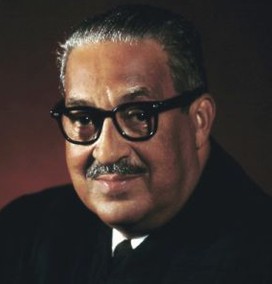Thurgood Marshall School of Law
Introduction
Text-to-speech Audio
Images
Thrugood Marshall

Thurgood Marshall School of Law

Backstory and Context
Text-to-speech Audio
Thurgood Marshall was born in 1908 in Baltimore Maryland to William Marshall, a grandson of a former slave. His mother Norma Marshall was a kindergarten teacher. Marshall graduated from Baltimore Colored High and Training School in 1926 and then entered Lincoln University where he graduated with honors. Marshall applied to the University of Maryland to law school, but he was denied admission due to the color of his skin. Marshall later graduated from Howard University in Washington D.C.
After graduating from Howard University, Marshall attempted to open his own practice in Baltimore before representing the NAACP where he won landmark cases, including one against the University of Maryland Law School-a case that outlawed the school's practice of only admitting white students.
Thurgood Marshall's most significant case was Brown vs. Board of Education, a suit that pitted African American plaintiffs against school officials in five cities that maintained racially segregated schools. In 1967, Marshall was appointed to the Supreme Court by Lyndon Johnson and served on the court until 1991.
